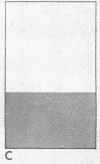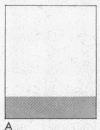Abstract
A reduction in effective (nonportal) plasma volume is considered the basis for renal sodium retention, a spontaneous reduction in glomerular filtration rate (GFR), and a fall in GFR occurring during drug-induced diuresis in patients with cirrhosis and ascites. In the present study the concept of a reduced effective plasma volume in cirrhosis is challenged by two lines of evidence, even though effective plasma volume itself could not be measured. (a) Total plasma volume failed to rise in 10 patients with the spontaneous loss of ascites, the appearance of sodium in the urine, and a rise in GFR. Portal pressure remained constant in these patients as ascites left, suggesting that effective plasma volume had not increased while portal plasma volume decreased. (b) Reduction of GFR could not be prevented in five patients with cirrhosis and ascites while total plasma volume was prevented from falling with albumin infusions during drug-induced diuresis. Reduction of GFR during drug-induced diuresis in 15 patients with cirrhosis and ascites was completely reversed with saline infusion despite continued diuresis with the identical drugs, excluding drug nephrotoxicity as the cause for the reduced GFR.
The ascites of cirrhosis might no longer be regarded as a cause of effective plasma volume contraction, stimulating renal sodium retention and a reduction in GFR. More likely, this form of ascites is a result of plasma volume expansion and sodium retention. The causes for renal sodium retention and a spontaneous reduction in GFR remain unknown. The cause for a fall in GFR during drug-induced diuresis also remains unknown, but effective plasma volume contraction and drug nephrotoxicity seem excluded.
Full text
PDF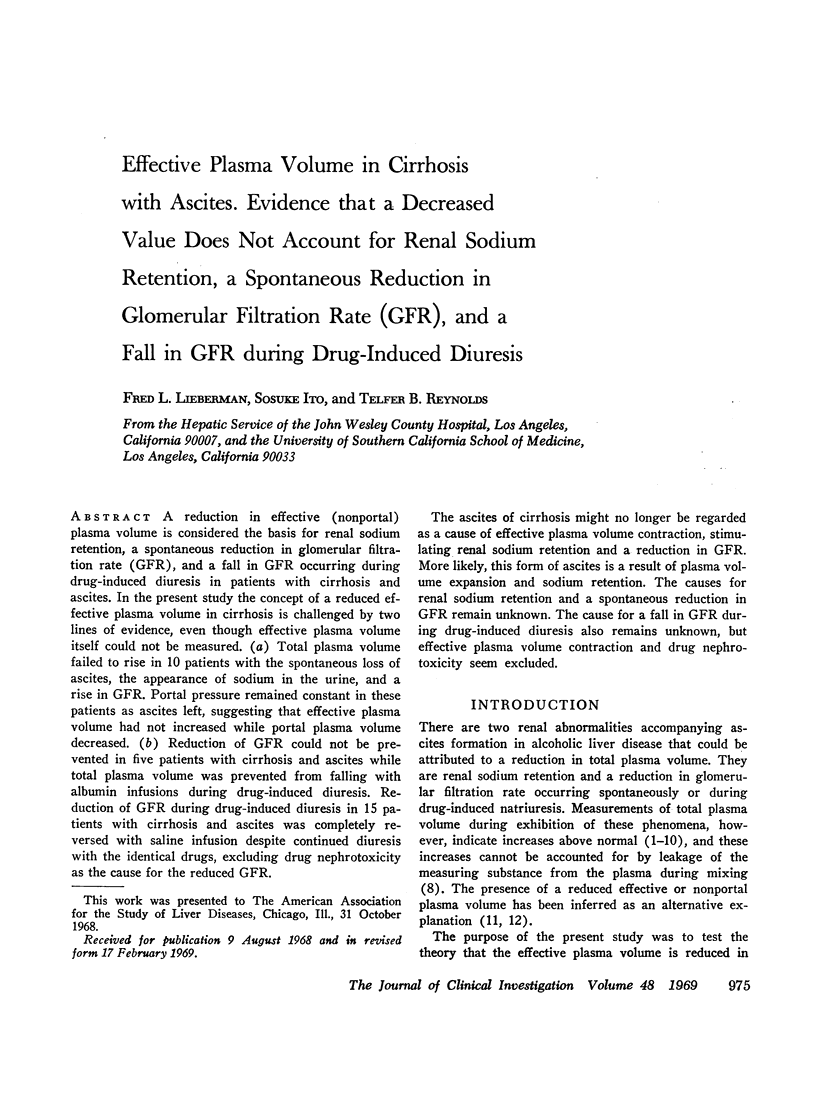
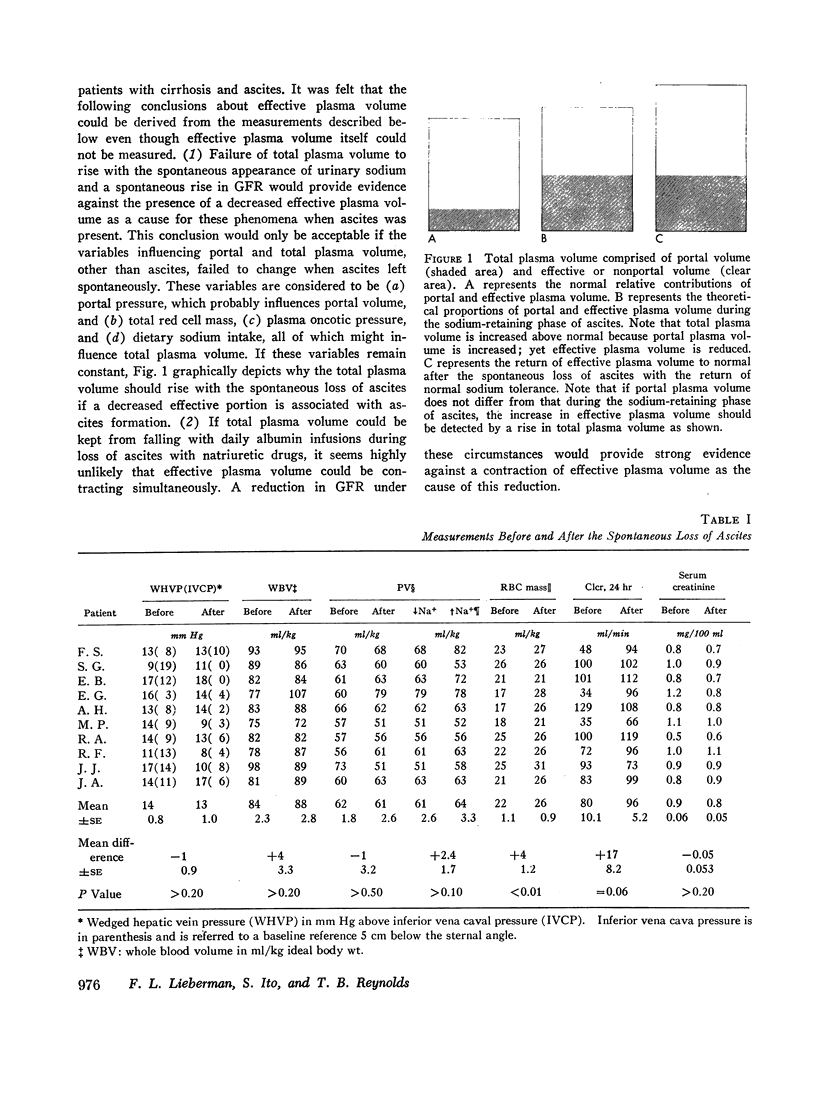
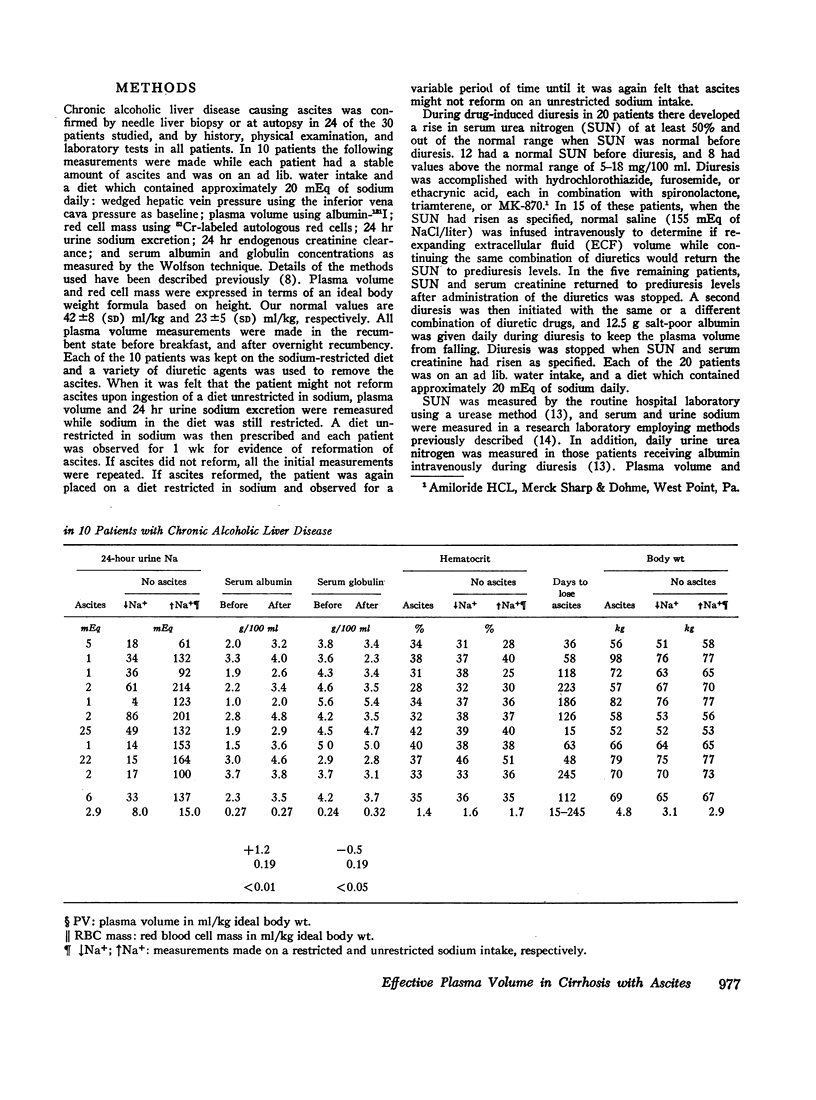
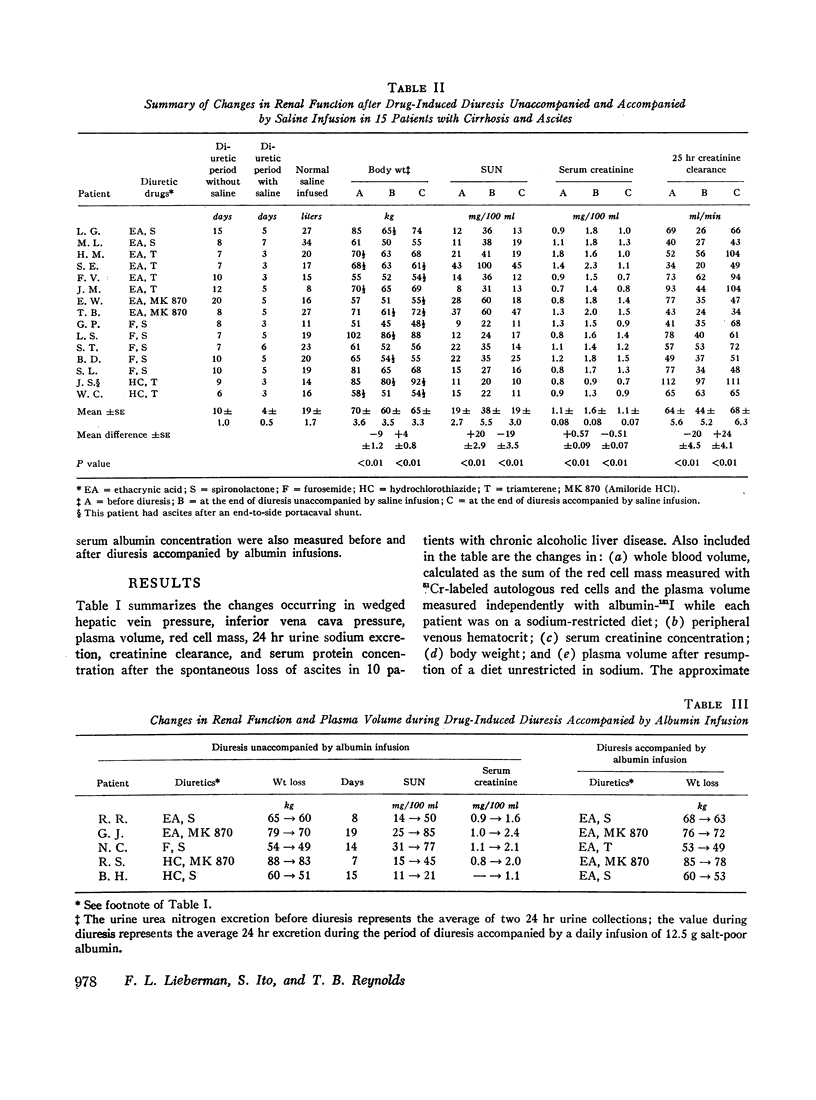
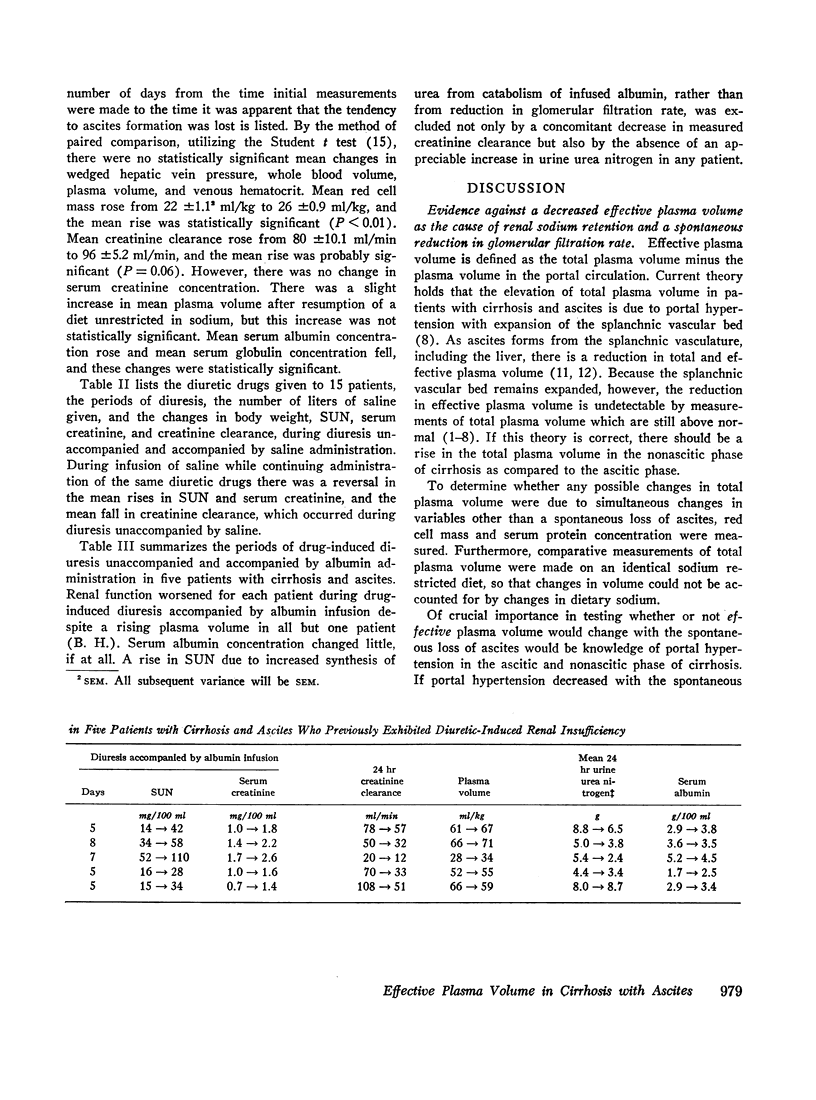
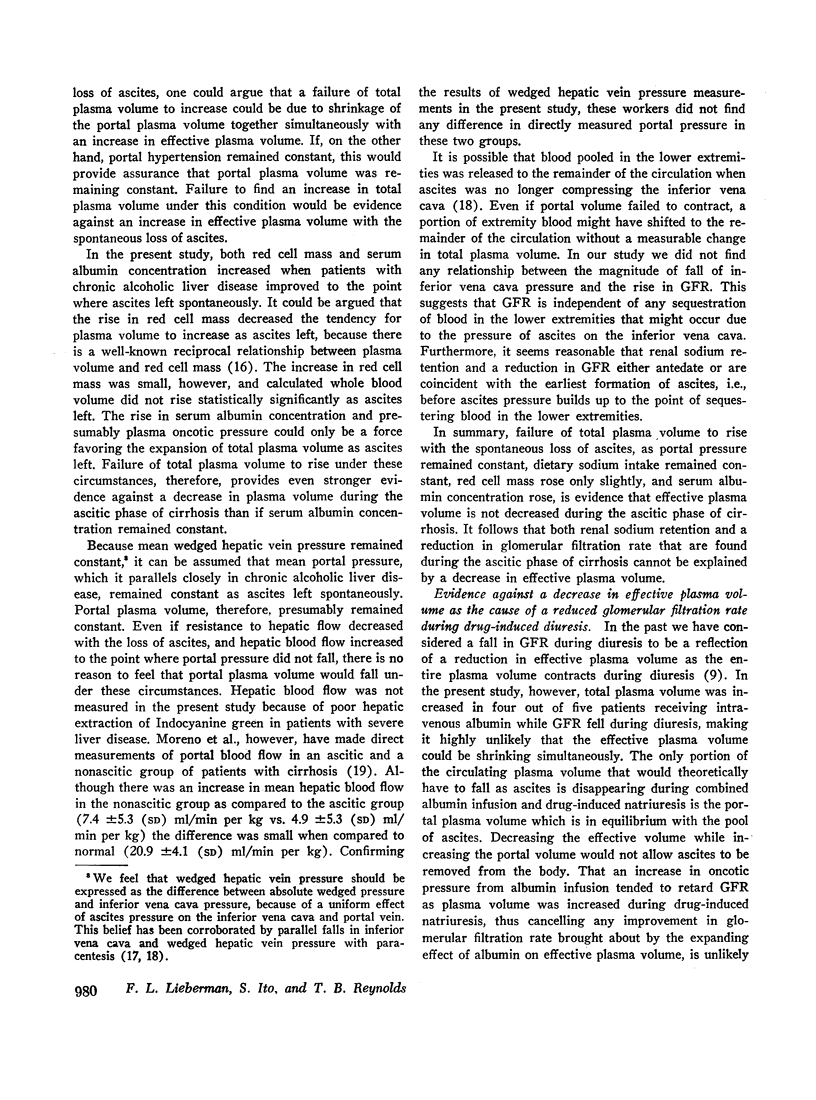
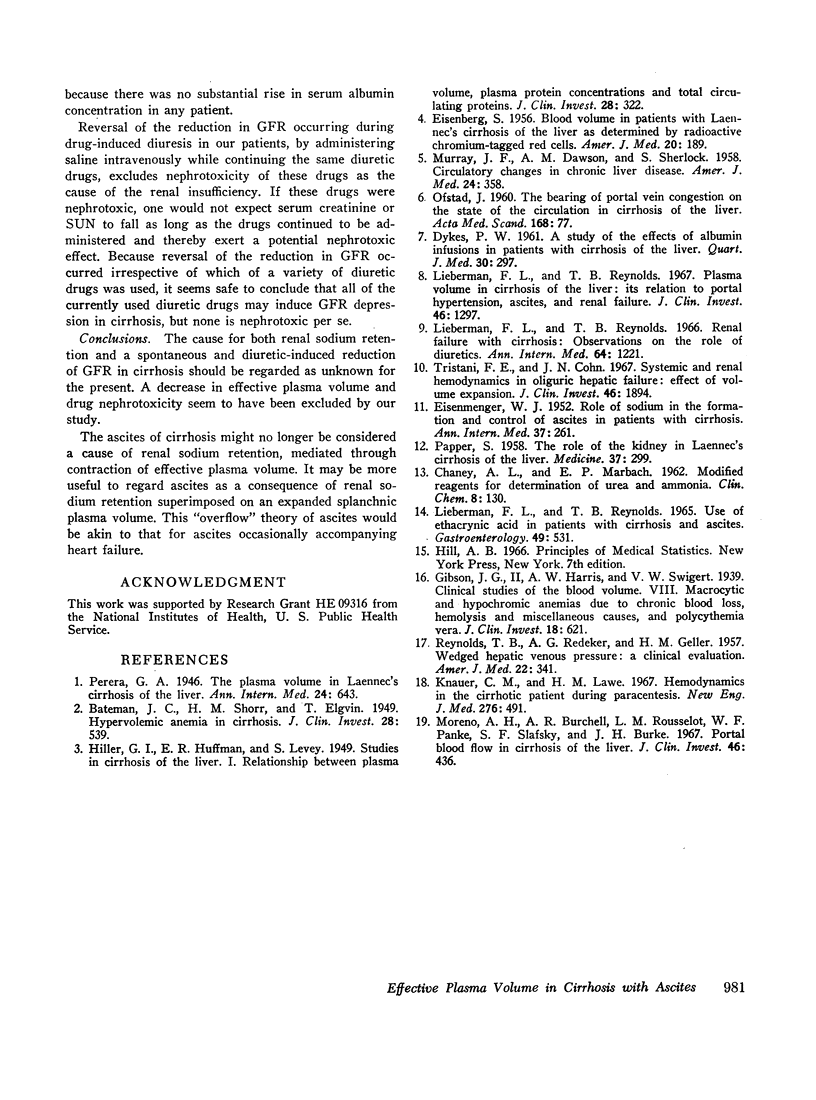
Images in this article
Selected References
These references are in PubMed. This may not be the complete list of references from this article.
- Bateman J. C., Shorr H. M., Elgvin T. HYPERVOLEMIC ANEMIA IN CIRRHOSIS. J Clin Invest. 1949 May;28(3):539–547. doi: 10.1172/JCI102102. [DOI] [PMC free article] [PubMed] [Google Scholar]
- CHANEY A. L., MARBACH E. P. Modified reagents for determination of urea and ammonia. Clin Chem. 1962 Apr;8:130–132. [PubMed] [Google Scholar]
- DYKES P. W. A study of the effects of albumin infusions in patients with cirrhosis of the liver. Q J Med. 1961 Jul;30:297–327. [PubMed] [Google Scholar]
- EISENBERG S. Blood volume in patients with Laennec's cirrhosis of the liver as determined by radioactive chromium-tagged red cells. Am J Med. 1956 Feb;20(2):189–195. doi: 10.1016/0002-9343(56)90189-9. [DOI] [PubMed] [Google Scholar]
- EISENMENGER W. J. Rôle of sodium in the formation and control of ascites in patients with cirrhosis. Ann Intern Med. 1952 Aug;37(2):261–272. doi: 10.7326/0003-4819-37-2-261. [DOI] [PubMed] [Google Scholar]
- Gibson J. G., Harris A. W., Swigert V. W. CLINICAL STUDIES OF THE BLOOD VOLUME. VIII. MACROCYTIC AND HYPOCHROMIC ANEMIAS DUE TO CHRONIC BLOOD LOSS, HEMOLYSIS AND MISCELLANEOUS CAUSES, AND POLYCYTHEMIA VERA. J Clin Invest. 1939 Nov;18(6):621–632. doi: 10.1172/JCI101077. [DOI] [PMC free article] [PubMed] [Google Scholar]
- Hiller G. I., Huffman E. R., Levey S. STUDIES IN CIRRHOSIS OF THE LIVER. I. RELATIONSHIP BETWEEN PLASMA VOLUME, PLASMA PROTEIN CONCENTRATIONS AND TOTAL CIRCULATING PROTEINS. J Clin Invest. 1949 Mar;28(2):322–330. doi: 10.1172/JCI102075. [DOI] [PMC free article] [PubMed] [Google Scholar]
- Knauer C. M., Lowe H. M. Hemodynamics in the cirrhotic patient during paracentesis. N Engl J Med. 1967 Mar 2;276(9):491–496. doi: 10.1056/NEJM196703022760903. [DOI] [PubMed] [Google Scholar]
- Lieberman F. L., Reynolds T. B. Plasma volume in cirrhosis of the liver: its relation of portal hypertension, ascites, and renal failure. J Clin Invest. 1967 Aug;46(8):1297–1308. doi: 10.1172/JCI105622. [DOI] [PMC free article] [PubMed] [Google Scholar]
- Lieberman F. L., Reynolds T. B. Renal failure with cirrhosis. Observations on the role of diuretics. Ann Intern Med. 1966 Jun;64(6):1221–1228. doi: 10.7326/0003-4819-64-6-1221. [DOI] [PubMed] [Google Scholar]
- Lieberman F. L., Reynolds T. B. The use of ethacrynic acid in patients with cirrhosis and ascites. Gastroenterology. 1965 Nov;49(5):531–538. [PubMed] [Google Scholar]
- MURRAY J. F., DAWSON A. M., SHERLOCK S. Circulatory changes in chronic liver disease. Am J Med. 1958 Mar;24(3):358–367. doi: 10.1016/0002-9343(58)90322-x. [DOI] [PubMed] [Google Scholar]
- Moreno A. H., Burchell A. R., Rousselot L. M., Panke W. F., Slafsky F., Burke J. H. Portal blood flow in cirrhosis of the liver. J Clin Invest. 1967 Mar;46(3):436–445. doi: 10.1172/JCI105545. [DOI] [PMC free article] [PubMed] [Google Scholar]
- OFSTAD J. The bearing of portal vein congestion on the state of the circulation in cirrhosis of the liver. Acta Med Scand. 1960 Oct 17;168:77–84. doi: 10.1111/j.0954-6820.1960.tb06646.x. [DOI] [PubMed] [Google Scholar]
- PAPPER S. The role of the kidney in Laennec's cirrhosis of the liver. Medicine (Baltimore) 1958 Dec;37(4):299–316. doi: 10.1097/00005792-195812000-00002. [DOI] [PubMed] [Google Scholar]
- REYNOLDS T. B., REDEKER A. G., GELLER H. M. Wedged hepatic venous pressure; a clinical evaluation. Am J Med. 1957 Mar;22(3):341–350. doi: 10.1016/0002-9343(57)90090-6. [DOI] [PubMed] [Google Scholar]
- Tristani F. E., Cohn J. N. Systemic and renal hemodynamics in oliguric hepatic failure: effect of volume expansion. J Clin Invest. 1967 Dec;46(12):1894–1906. doi: 10.1172/JCI105679. [DOI] [PMC free article] [PubMed] [Google Scholar]



